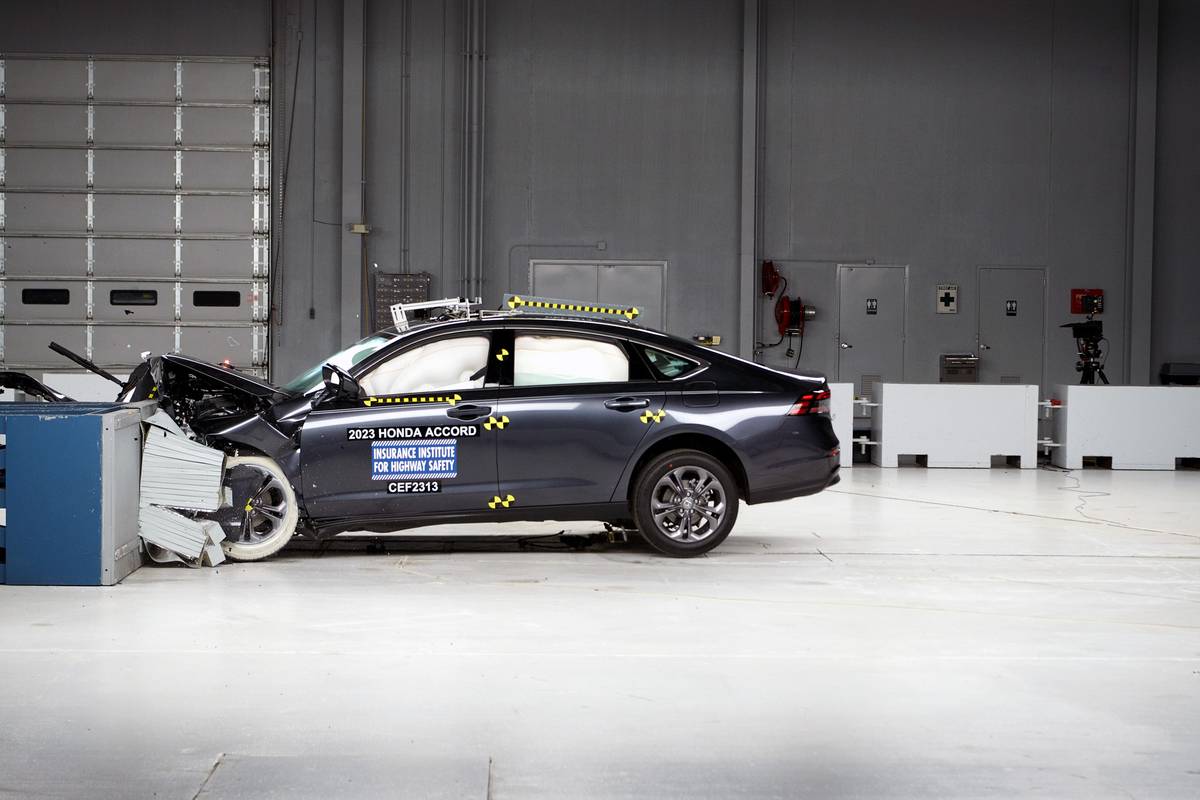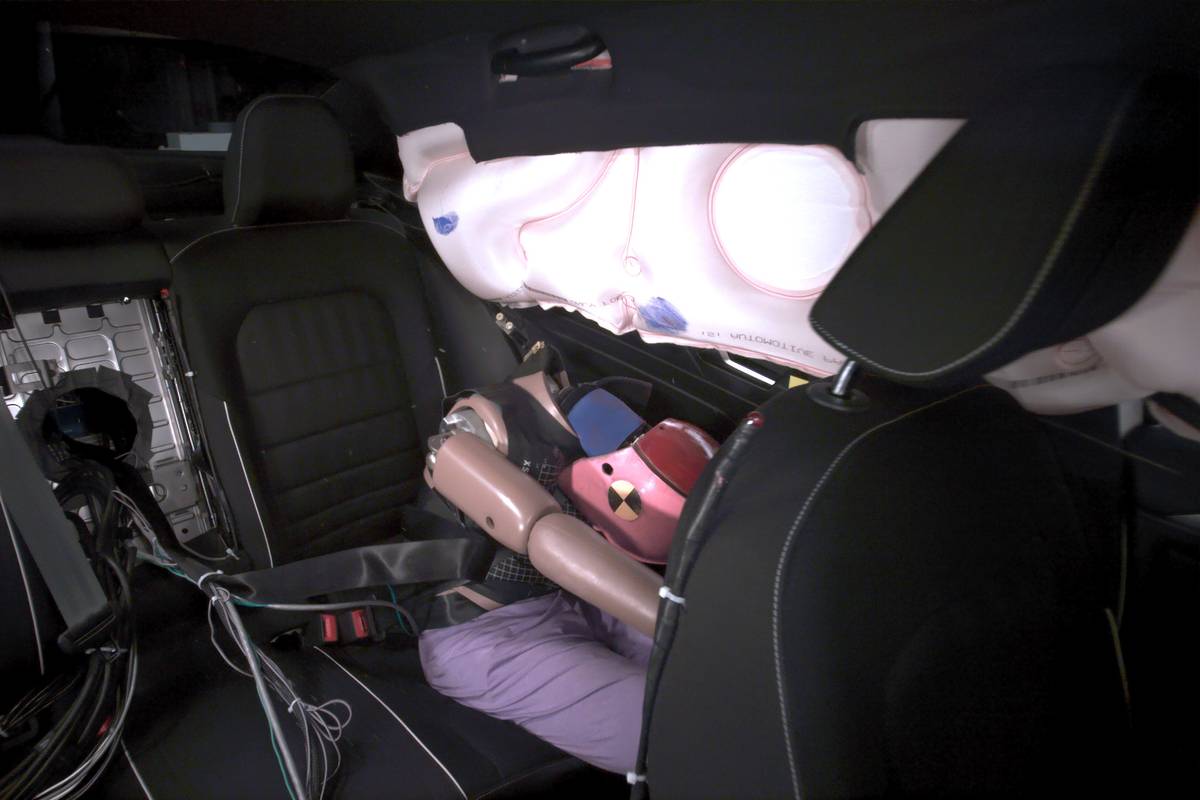Mid-Size Sedans Struggle to Protect Rear-Seat Occupants in Revised Crash Test

The Insurance Institute for Highway Safety must be satisfied with its moderate overlap front crash test — or rather, it must be satisfied with how well most cars perform in that test. The agency has taken additional measurements to gauge the protection for rear-seat passengers as well as occupants in the front of the vehicle. IIHS recently subjected five mid-size pickup trucks to this test, and none earned a good rating. The latest session included seven mid-size sedans; results were more mixed.
Related: Mid-Size Pickups Are Acceptable at Best in New IIHS Crash Test
Submarining Risk

IIHS assessed model-year 2023 versions of the Honda Accord, Hyundai Sonata, Kia K5, Nissan Altima, Subaru Outback, Toyota Camry and Volkswagen Jetta. All seven earned good ratings for the front seat, but only the Accord scored a good rating for the back. The Jetta earned an acceptable rating for the backseat, and the rest of the cars were rated poor. This means that for the overall ratings for both rows, the Accord rated good, the Outback acceptable, the Altima and Camry marginal, and the remainder ranked poor.
“In most of the mid-size cars we tested, the rear dummy slid forward, or ‘submarined,’ beneath the lap belt, causing it to ride up from the pelvis onto the abdomen and increasing the risk of internal injuries,” said IIHS President David Harkey in a statement. This was true of the K5, Sonata, Altima and Camry. In all four cars, the shoulder belt also slid off the dummy’s shoulder and toward its neck. While the Jetta’s rear passenger didn’t submarine, its head came too close to the front seatback. In the Jetta as well as the Sonata and K5, measurements from the dummy suggested injuries to the head, neck and chest were likely.
The Outback earned its acceptable overall rating because while measurements didn’t show an elevated risk of injury, the rear dummy submarined under the lap belt and its head came too close to the front seatback. As it rebounded after the crash, the dummy’s head also slipped behind the side curtain airbag and struck the rear window trim.
More From Cars.com:
- Backseat Dangers: Small Cars Fumble in Updated IIHS Crash Test
- Here’s Every Car That Earned an IIHS Top Safety Award for 2023
- Revised Crash Test Highlights SUVs’ Lagging Rear Passenger Protection
- IIHS Small Overlap Front Crash Test Makes Impact, Study Shows 12% Reduction in Frontal Crash Fatalities
- More Safety News
Updated Testing
The moderate overlap front crash test recreates a common crash scenario: sending a vehicle traveling at 40 mph into a barrier that covers 40% of the width of the vehicle. While the dynamics of the test are unchanged, the agency now takes measurements from a dummy placed in the rear seat as well as one in the front. The driver dummy remains an average-size adult male, while another dummy the size of a 12-year-old child or small woman rides in the seat behind the driver.
IIHS ranks vehicles’ crash performance on a scale of good, acceptable, marginal or poor. It applies the same rating system to the likelihood of injury to the head and neck, chest, knee and thigh, and lower leg and foot of each occupant. It separately applies the scale to occupant restraints and kinematics, recording the position of the dummy during the crash and noting if it stays correctly positioned or “submarines,” which can increase the likelihood of injury. IIHS also logs the proximity of the dummy’s head to the back of the front seat and anything else in the interior, and it fits a pressure sensor to the dummy’s torso to monitor the shoulder belt’s position during the crash. To earn a good rating for the crash test, a vehicle now needs to protect both dummies from what IIHS calls “excessive risk of injury.”
Shoppers should understand that as this is a relatively new test, these results are not surprising. Harkey noted in a statement, “We know automakers are working on improvements, and we expect to see better ratings in the near future.” He also stresses the backseat is still the safest place for young children, who are vulnerable to injury from inflating front airbags.
Related Video:
Cars.com’s Editorial department is your source for automotive news and reviews. In line with Cars.com’s long-standing ethics policy, editors and reviewers don’t accept gifts or free trips from automakers. The Editorial department is independent of Cars.com’s advertising, sales and sponsored content departments.
Featured stories




